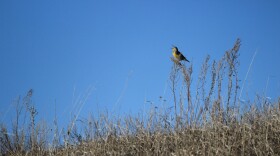There are a dozen species of sage that may be found in North Dakota. Among the more common are a couple species that most people would just call sagebrush, wormwood (an introduced noxious weed), and fringed sage or prairie sagewort (Artemisia frigida).
Although not closely related to the sage used in cooking which is a member of the mint family, these sages are in the daisy family (Asteracae). They belong to the genus Artemisia and are noted for being quite aromatic due to essential oils.
No doubt many of you have enjoyed the smell of sagebrush in the badlands, particularly after a summer rain. Fringed sage is also quite aromatic. If one crushes or rolls the leaves of fringed sage between their fingers a camphor-like smell is produced. Like the smell of sagebrush after a rain, the smell of fringed sage will make their nose want to get up and dance.
Fringed sage can be found throughout North Dakota. If you look out on the grasslands, particularly on drier sites or areas that have received heavy grazing, you may notice some small rather bushy silver or gray colored sub-shrubs or half-shrubs growing to a foot or so tall.
The silvery appearance is due to the many small divided leaves being covered with fine silky hairs. The flowers are small and inconspicuous.
Fringed sage is known for its resistance to grazing. It is often common on upland prairie but because it is seldom grazed by cattle it may become conspicuously abundant on pastures with a history of heavy grazing. It is also drought tolerant, so it is generally more common on the drier uplands and can become a prominent plant following drought such as that of the dirty thirties.
Fringed sage was an important plant to many Native American tribes. It was used in religious ceremonies to drive away the evil spirits. And was valued for its medicinal properties and was known as “women’s sage” by some tribes, in part because it was used to stimulate contractions during birthing.
Upcoming meteor showers
And please note that the Delta Aquarids meteor shower starts on July 12 and will run through August 23. The peak viewing will come on the evening of July 18 with perhaps up to 20 meteors per hour.





